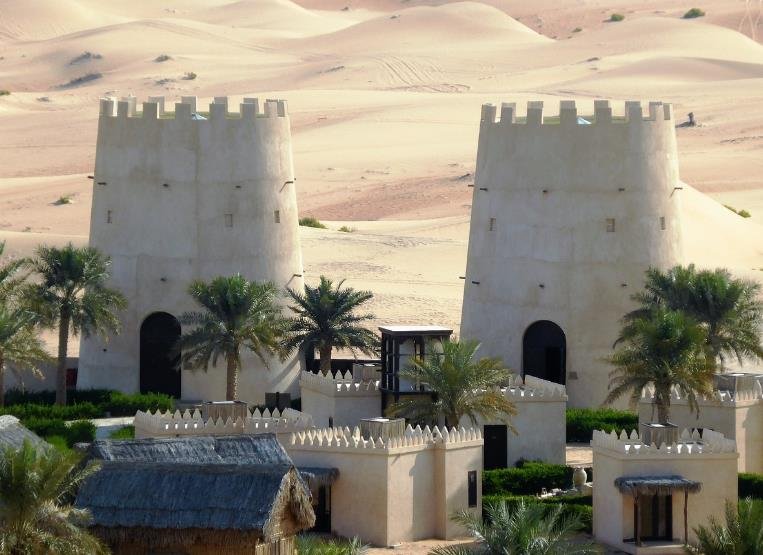A groundbreaking discovery in Saudi Arabia reveals an ancient Bronze Age town buried beneath the fertile oasis of Khaybar, shedding light on early urbanization in the Arabian Peninsula.
Archaeologists have made a remarkable discovery in Saudi Arabia’s Madinah province—a 4,000-year-old town named al-Natah. This ancient settlement, dating back to around 2400 BC, showcases a pivotal shift from a nomadic cattle-herding lifestyle to a sophisticated urban society. Hidden beneath the lush oasis of Khaybar, al-Natah offers invaluable insights into the early stages of city development in northern Arabia.
The excavation team stumbled upon remnants of structures, artifacts, and defensive walls that suggest al-Natah was a fortified city. These findings indicate that the inhabitants were transitioning towards a more settled and organized community, marking a significant milestone in the region’s history.
The Hidden Oasis: Khaybar’s Role in Ancient Urbanization
Khaybar Oasis, known for its fertility and strategic location, played a crucial role in the establishment and growth of al-Natah. Surrounded by vast deserts, the oasis provided the necessary resources for sustaining a large population and fostering agricultural advancements. The presence of water and arable land made Khaybar an ideal location for early settlers seeking stability and growth.
Despite its advantageous position, urbanization in northern Arabia has been challenging to study due to the scarcity of well-preserved archaeological sites. Unlike regions such as the Levant and Mesopotamia, northern Arabia lacks extensive excavations, making discoveries like al-Natah all the more significant. This find bridges a critical gap in our understanding of how early societies in this area evolved and interacted with their environment.

Transitioning from Nomads to Urban Dwellers
The transformation of al-Natah from a nomadic to an urban society highlights the dynamic changes that were occurring in ancient Arabia. Evidence from the site suggests that the inhabitants developed advanced agricultural techniques, trade networks, and social structures that supported a growing population. The shift towards a settled lifestyle allowed for the construction of permanent buildings, storage facilities, and defensive structures, all of which are evident in the archaeological remains.
This transition was not merely a change in living arrangements but also reflected broader socio-economic developments. The emergence of al-Natah indicates increased social organization, specialization of labor, and the beginnings of governance systems that managed resources and maintained order within the community.
Challenges in Archaeological Exploration
Despite the significance of al-Natah, archaeologists face numerous challenges in exploring and preserving ancient sites in northern Arabia. The harsh desert climate, coupled with the modern development of surrounding areas, poses threats to the integrity of archaeological findings. Additionally, limited funding and resources for archaeological projects in this region hinder comprehensive exploration and documentation.
However, the discovery of al-Natah has sparked renewed interest and investment in archaeological research within Saudi Arabia. Collaborative efforts between local and international institutions aim to further investigate the site and uncover more about the lives of its ancient inhabitants. Future excavations are expected to provide a deeper understanding of the technological, cultural, and economic advancements that defined early urban societies in the Arabian Peninsula.
Implications for Understanding Early Urbanization
The unearthing of al-Natah offers profound implications for our comprehension of early urbanization processes. It demonstrates that the Arabian Peninsula was not merely a crossroads for trade and nomadic tribes but also a region capable of supporting complex urban centers. The advancements seen in al-Natah parallel developments in other ancient civilizations, suggesting a concurrent evolution of urban life across different parts of the world.
Furthermore, the discovery challenges previous notions about the timeline and nature of urban growth in northern Arabia. It provides concrete evidence that significant urban development was underway much earlier than previously thought, paving the way for future studies and comparative analyses with other ancient cities.
The Road Ahead for Archaeological Research
As researchers continue to explore al-Natah, the focus will likely expand to uncover more about the daily lives, trade practices, and technological innovations of its inhabitants. Advanced archaeological techniques, such as ground-penetrating radar and 3D modeling, will play a crucial role in mapping the site and preserving its fragile structures.
Moreover, the collaboration between archaeologists, historians, and local communities will be essential in ensuring that the heritage of al-Natah is protected and celebrated. Public interest and support for such discoveries can lead to increased funding and resources, facilitating more extensive and meaningful research endeavors.
